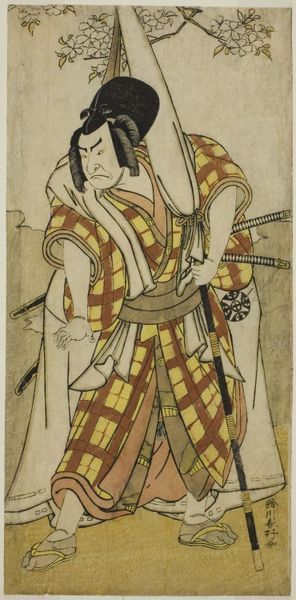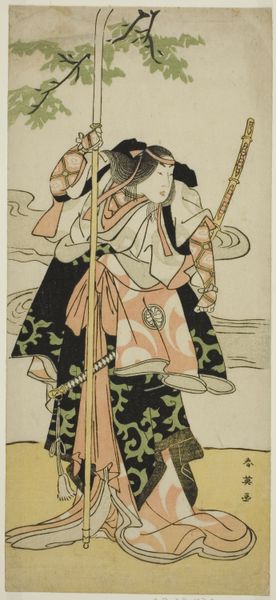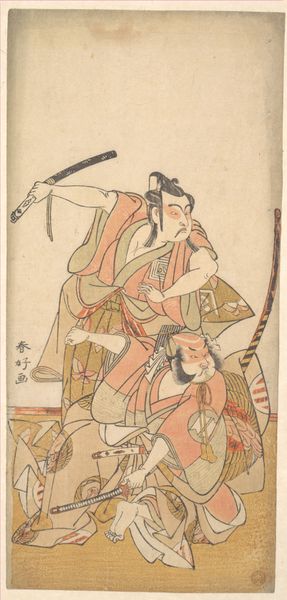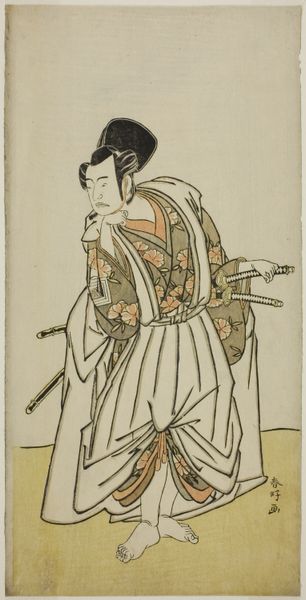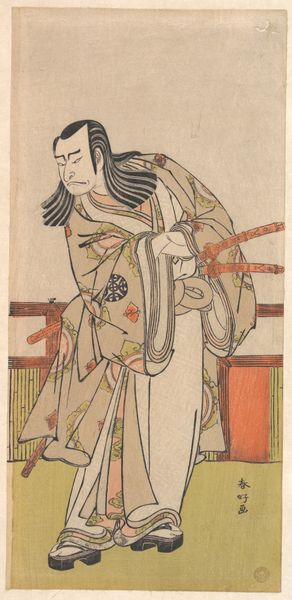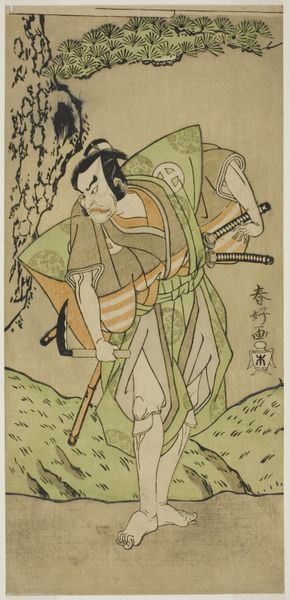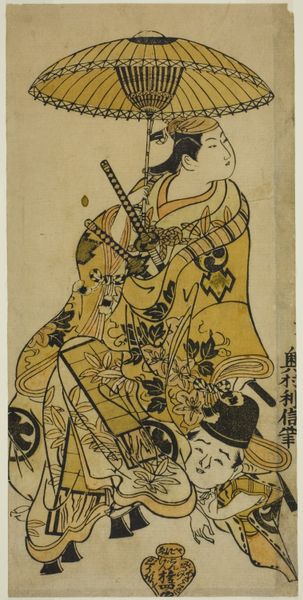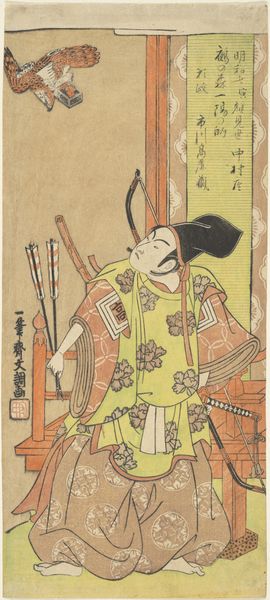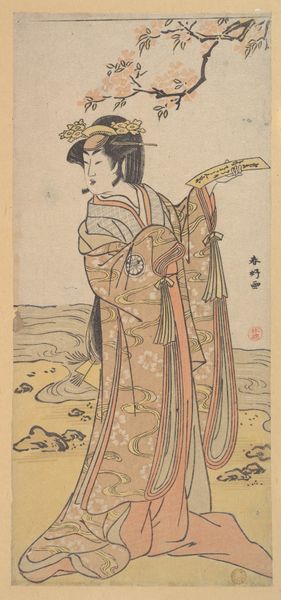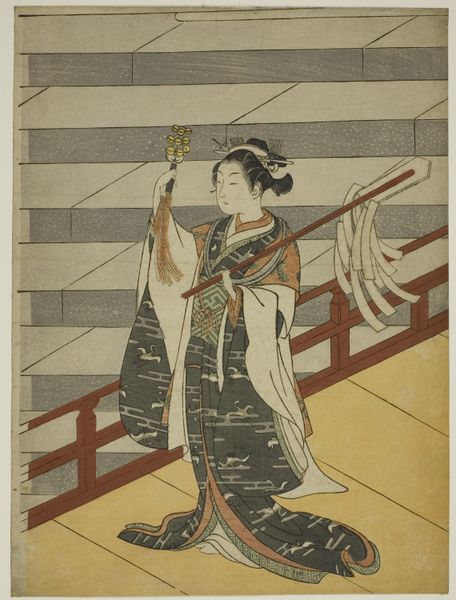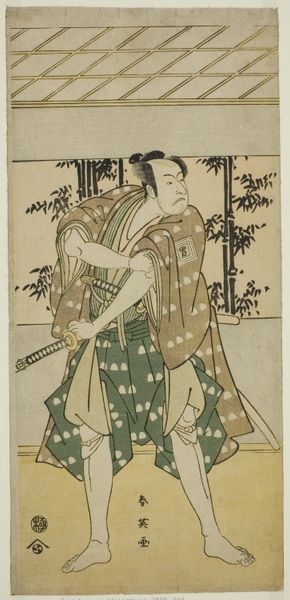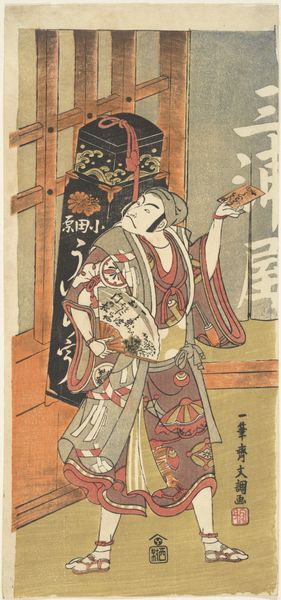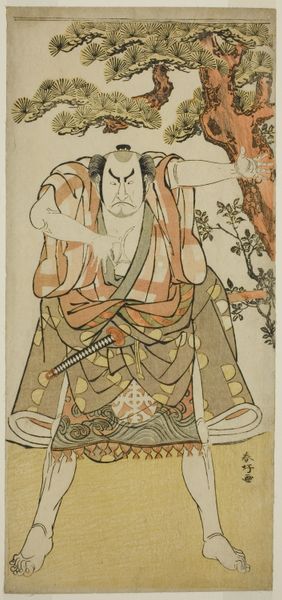
Danjuro as a Youth with a Toy Horse under Plum Blossoms 1615 - 1868
0:00
0:00
print, woodblock-print
#
portrait
# print
#
asian-art
#
ukiyo-e
#
japan
#
figuration
#
woodblock-print
Dimensions: 11 3/4 x 5 5/8 in. (29.8 x 14.3 cm)
Copyright: Public Domain
Curator: Oh, this piece feels quite intimate and contemplative. It's almost dreamlike. Editor: It is a striking print, created sometime between 1615 and 1868 by Ippitsusai Buncho. This work, currently held at the Metropolitan Museum of Art, is titled "Danjuro as a Youth with a Toy Horse under Plum Blossoms". Curator: "Plum Blossoms"...symbolically, aren't they the first to bloom, signaling resilience and new beginnings after winter? Given that the figure is identified as a "youth," does that connect to his future potential, perhaps? Editor: Certainly. The plum blossom resonates deeply within Japanese aesthetics. Moreover, the very deliberate composition emphasizes diagonals, doesn't it? See how the angle of the horse, his pipe, and even the suggestive lean of the plum tree draw the eye? There is tension created in the pictorial structure, like a tightly wound spring. Curator: The horse, though a toy, might represent future military prowess. Danjuro, even as a youth, carries two swords at his waist. It is an actor portrait, so perhaps a reflection on the lineage of the stage as well. What he embodies culturally must continue through generations. Editor: Good point. And speaking of visual legacies, consider the flat, planar approach in the printing, almost an echo of earlier scroll paintings but reimagined through this particular medium. The stylized fabric, for example, becomes pure visual play through its pattern. Curator: Absolutely, visuality serves not just aesthetic but symbolic purpose. What narratives and values were being perpetuated through prints such as this? Images created this way offer collective memory to viewers who will recall similar representations of figures in performative roles or other social arrangements. Editor: Indeed, "collective memory" made material, and reshaped, through line, color and form. Thinking formally, this print offers us not only an understanding of figuration and symbol, but how these components structure themselves. Curator: And what remains for us, centuries later, is a potent mix of aesthetic delight, historical insight, and emotional echo. Editor: Well said. It prompts a deep, multi-layered visual inquiry.
Comments
No comments
Be the first to comment and join the conversation on the ultimate creative platform.
